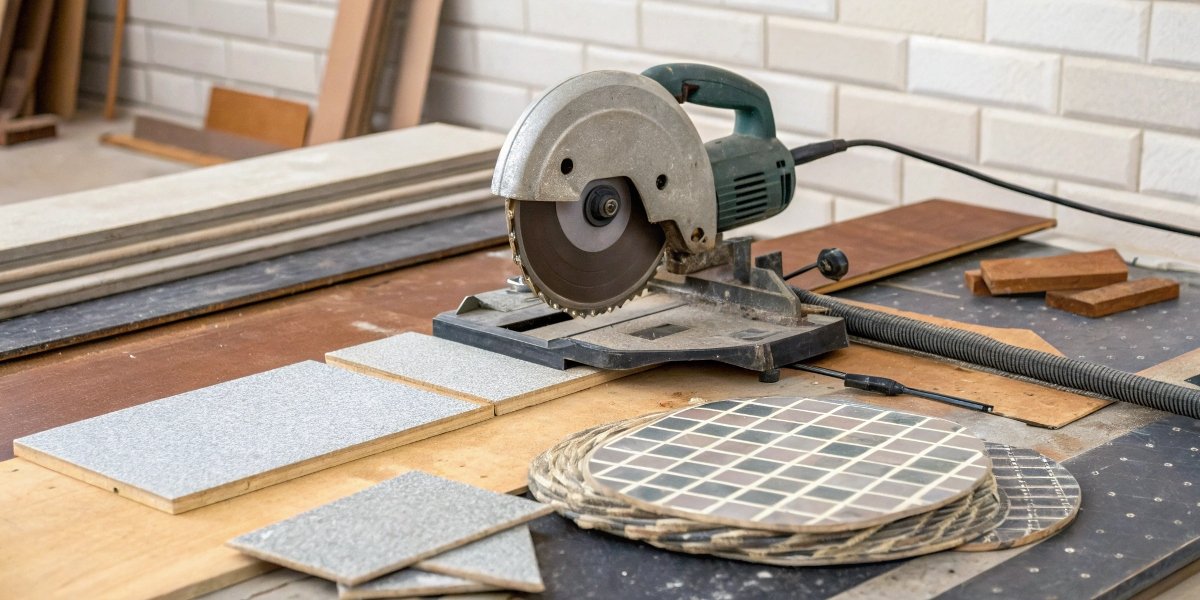
Stuck thinking your abrasive chop saw is a one-trick pony for metal? This mindset costs you money and clutters your workshop with tools you may not even need.
Yes, you absolutely can. By swapping the standard abrasive wheel for a specialized blade, like a diamond or silicon carbide disc, your chop saw becomes a versatile tool. It can effectively cut materials like stone, concrete, and tile, expanding its use far beyond just metalwork.
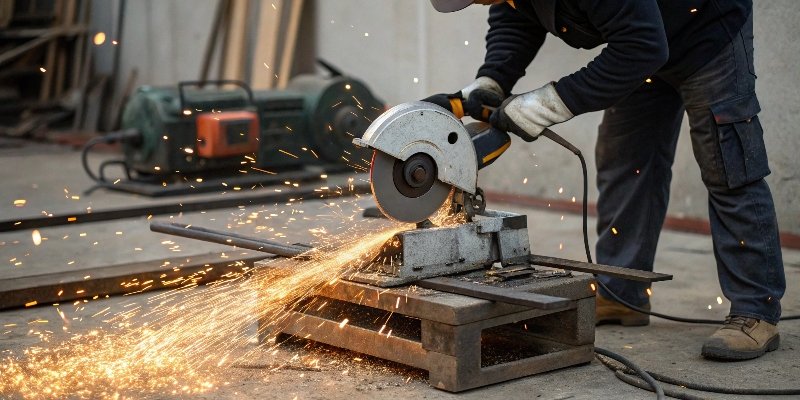
It’s a question I hear all the time from purchasing managers looking to maximize their equipment’s value. They invest in a powerful tool for cutting steel, and then wonder if they need a separate machine for masonry1 or other tough materials. The good news is that the answer often lies in the blade, not the saw. As a manufacturer of abrasive tools2 for nearly 30 years, we’ve specialized in creating the right blade for the right job. But to truly understand this versatility, you first need to be clear about the tool you’re using. Let’s start by clearing up some common confusion about the saws themselves.
What is the difference between a chop saw and an abrasive chop saw?
Confused by the different types of saws on the market? Using the wrong one can lead to poor cuts, damaged materials, and even serious safety risks. Let’s fix that.
A standard chop saw, often called a miter saw, uses a toothed blade to make precise cuts primarily in wood. An abrasive chop saw uses a solid, consumable abrasive disc that grinds through hard materials like metal, creating many sparks. The key difference is the blade and cutting action.
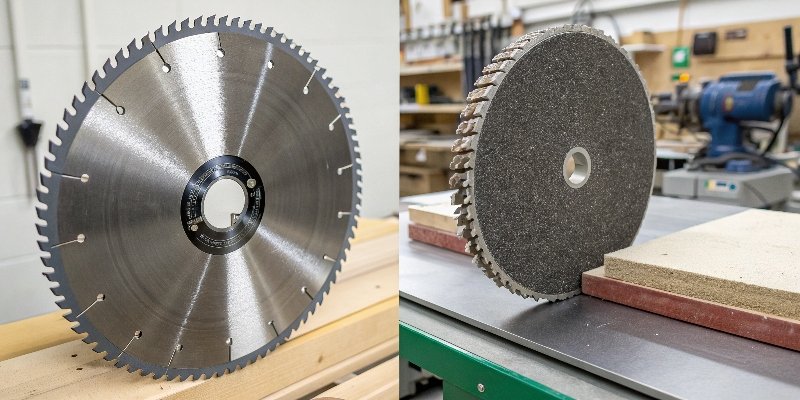
Here in our factory in Henan, the heart of China’s abrasives industry, we focus entirely on the consumable disc part of the equation. Understanding the tool that uses our products is critical for our customers. Let’s break it down further.
The Blade Determines the Action
A standard chop saw acts like a surgeon. Its toothed blade3 slices cleanly through material, leaving a relatively smooth finish. It’s designed for precision, especially for angled cuts in woodworking. An abrasive chop saw is more like a grinder. The abrasive disc doesn’t have teeth. Instead, it’s made of millions of tiny, hard particles that wear away the material through friction. This process generates a lot of heat and sparks, which is normal for cutting hard metals.
Different Tools For Different Jobs
Because of their different cutting actions, these saws have different primary purposes. You wouldn’t use a grinder to build a picture frame, and you wouldn’t use a fine-toothed wood saw to cut through a steel I-beam. This table makes the distinction clear.
| Feature | Standard Chop Saw (Miter Saw) | Abrasive Chop Saw |
|---|---|---|
| Blade Type | Toothed Blade (e.g., Carbide-tipped) | Solid Abrasive Disc (Consumable) |
| Action | Slicing / Shearing | Grinding / Abrading |
| Primary Use | Wood, plastics, soft metals (with right blade) | Ferrous metals, rebar, steel pipe, masonry |
| Byproduct | Sawdust, chips | Intense sparks, abrasive dust, heat |
| Precision | High precision, clean cuts for joinery | Lower precision, rougher cut ideal for fabrication |
Can I use a chop saw to cut metal?
You have a job that requires cutting metal, but you only have a wood chop saw. Buying another expensive tool seems wasteful. Is there a way to make it work?
Yes, you can use a standard chop saw (miter saw) for some metals, but you must switch to a specialized metal-cutting blade with teeth. Never use a wood blade. For heavy or frequent metal cutting, an abrasive chop saw is still the better and safer choice.
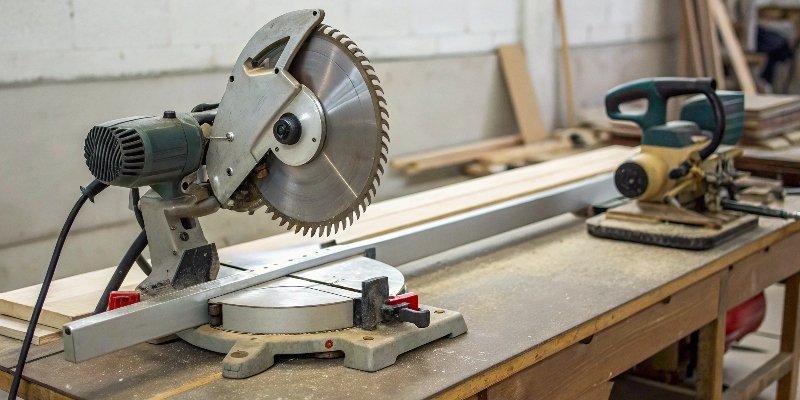
This is a practical problem many workshops face. While you can put a metal-cutting blade on a miter saw, it’s important to understand the trade-offs. The tool may get the job done, but it wasn’t designed for it.
Blade and Speed are Critical
A standard miter saw spins its blade at a very high RPM4, which is great for wood but can be problematic for metal. A metal-cutting blade5 for a miter saw is engineered differently from a wood blade. It has a different tooth geometry and is made from harder materials to handle the stress. Even with the right blade, these saws are best for softer, non-ferrous metals like aluminum or thin-gauge steel. Cutting thick, hard steel this way can quickly dull the blade and strain the saw’s motor.
The Right Tool for Production
For any serious metal fabrication, the abrasive chop saw wins. Our RL brand cutting discs are designed for exactly this. They thrive on the high speeds and tough materials. An abrasive disc is also far more cost-effective for heavy metal cutting. A single toothed metal-cutting blade for a miter saw can be expensive. You could buy many abrasive discs for the same price. For B2B clients who need to make hundreds of cuts a day, the choice is clear. The abrasive saw provides the speed, power, and low consumable cost needed for production environments.
When should you not use a chop saw?
A chop saw is powerful, but that power can be dangerous. Using it for the wrong application can ruin your material, damage the tool, and risk serious personal injury.
Never use a chop saw for freehand cutting, cutting curves, or cutting materials that are not clamped down securely. Also, avoid using a standard wood chop saw for heavy masonry or thick steel, as it can’t handle the sparks and debris, and the motor will overheat.
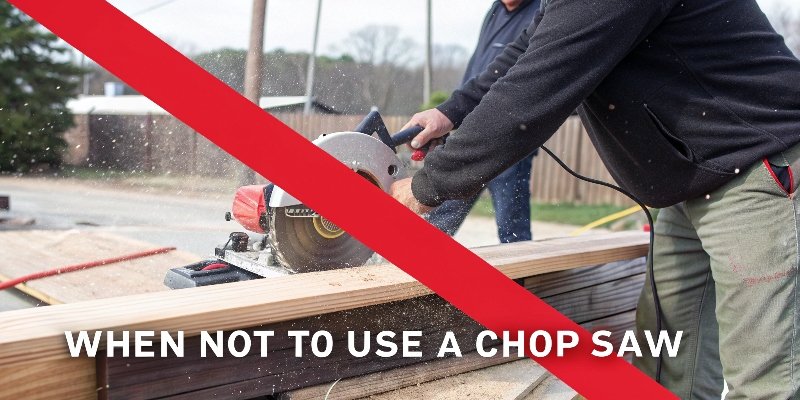
Safety and proper use are the foundation of efficiency. I always remind our clients that even the best abrasive disc can’t make up for improper tool use. A chop saw’s purpose is very specific: to make straight cross-cuts at various angles. Trying to use it for anything else is asking for trouble.
Unsuitable Tasks for a Chop Saw
The design of the saw, with its pivoting head, makes it inherently unsuitable for certain tasks.
- Freehand Cuts: The workpiece must always be held firmly against the fence and table, ideally with a clamp. Never hold a small piece in your hand to cut it.
- Curved Cuts: A chop saw blade can only move in one direction: down. It cannot be guided along a curved line. A jigsaw or a band saw is the right tool for curves.
- Ripping Boards: "Ripping" means cutting a board along its length. A chop saw does not have the table support or fence system for this. A table saw is designed for ripping.
Unsuitable Materials
This goes back to the main point of our article. You must match the blade and saw to the material. Cutting stone with a wood blade will destroy the blade and get you nowhere. Even with an abrasive saw, you must consider the material’s properties. For example, when using a diamond blade to cut hard stone or concrete, we recommend using water. This keeps the blade cool, reduces dust, and extends its life. When cutting plastics, you should use a lower speed (under 8,000 RPM) to avoid melting the material and releasing toxic fumes. Know your tool, know your blade, and know your material.
How many tooth blade for cutting metal?
Picking the wrong blade for metal seems like a small mistake. But it can cause violent grabbing, slow and overheated cuts, or a ruined finish. Let’s get it right.
For cutting ferrous metals (steel) with a toothed blade, use a lower tooth count, around 30-80 teeth for a 12-inch blade. For non-ferrous metals (aluminum), use a higher tooth count. However, abrasive discs don’t have teeth; their effectiveness comes from grit material and bonding.
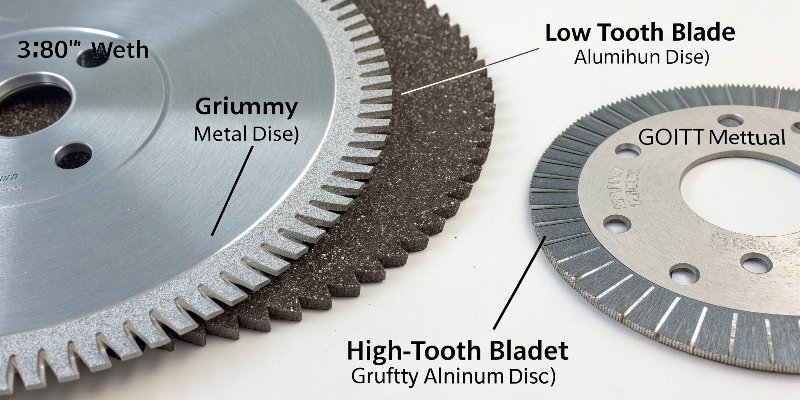
This question highlights a key difference in cutting technology. As an abrasive manufacturer, this is where our expertise is most valuable. The logic for choosing a toothed blade is completely different from choosing an abrasive disc.
Logic of Toothed Blades
For blades with teeth, the number of teeth (or TPI – Teeth Per Inch) is about balancing speed and finish.
- Fewer Teeth: Each tooth takes a bigger "bite." This is aggressive and fast, which is good for thick, hard steel. It clears chips effectively and reduces heat buildup.
- More Teeth: Each tooth takes a smaller bite. This gives a smoother finish, which is ideal for softer metals like aluminum or brass where you want to avoid ugly burrs.
Logic of Abrasive Discs
Abrasive discs don’t have teeth. They are a composite of abrasive grains (like aluminum oxide, silicon carbide, or diamond) held together by a bonding agent. Here, performance isn’t about teeth, but about the right recipe.
| Material | Recommended Disc Type | Key Considerations from Our Factory |
|---|---|---|
| Thick Steel | Aluminum Oxide Abrasive Disc | A good balance of cutting speed and disc life. Our main product line. |
| Stone/Concrete | Diamond Blade | For hard granite, use a high-grit diamond (≥800). Use water for cooling. |
| Ceramic/Tile | Diamond or Silicon Carbide Disc | Diamond gives a cleaner cut and lasts much longer. A 125mm blade can cut a 10mm tile in about 2 minutes. |
| Plastic (PVC) | Silicon Carbide Disc | Use lower RPMs (≤8000) to prevent melting. Cutting can be twice as fast as metal. |
So, if you’re ordering from us for your metal fabrication business, you won’t ask for a tooth count. You’ll specify the material you’re cutting, and we will provide the optimal abrasive disc from our RL line or develop a custom OEM solution6 for you.
Conclusion
Your abrasive chop saw is far more powerful and versatile than you might think. With the right blade, it can cut metal, stone, and tile, boosting your workshop’s efficiency.
-
Explore the best tools for masonry cutting to ensure precision and safety. ↩
-
Explore the various types of abrasive tools and their applications in different industries. ↩
-
Learn how toothed blades work and their applications in woodworking and metalworking. ↩
-
Explore the significance of RPM in cutting tools and its impact on performance. ↩
-
Understand the unique features of metal-cutting blades for effective metalwork. ↩
-
Discover how custom OEM solutions can meet specific manufacturing needs. ↩
Written by
leeon
You may also be interested in:
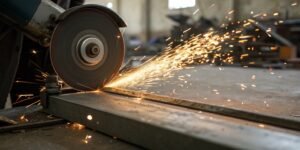
Can you use a diamond blade to cut through metal?
You need to cut some metal, and the diamond blade on your saw is right there. Using the wrong disc can destroy your blade, damage
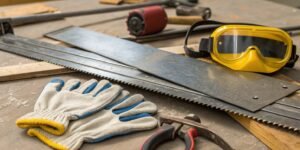
How to cut through metal inexpensively?
Struggling with high costs for cutting metal? These expenses can quickly eat into your project’s budget, slowing down your progress. Here are the most practical
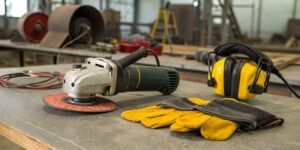
Why are 9-inch angle grinders banned in Australia?
Struggling with worksite safety compliance? Using oversized tools can pose huge risks. Understanding Australia’s ban on 9-inch grinders helps you see why safety regulations are
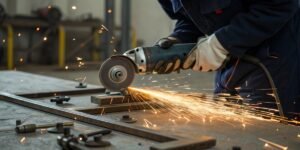
How do you cut bolts with an angle grinder?
Struggling to make a clean cut on a stubborn bolt? Using an angle grinder can feel intimidating, but it is a fast and effective method
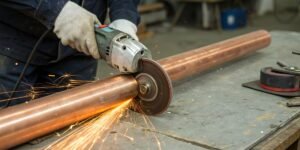
Can I use an angle grinder to cut a copper pipe?
Struggling with a quick copper pipe cut? Worried about damaging the material? An angle grinder is a fast solution, but using it wrong can be
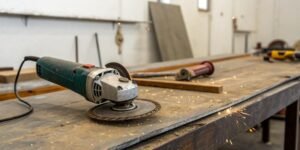
Can an angle grinder cut meat and bones?
Struggling to cut tough bones? Thinking of grabbing your angle grinder for a quick solution? This powerful tool seems like an easy answer, but it’s
